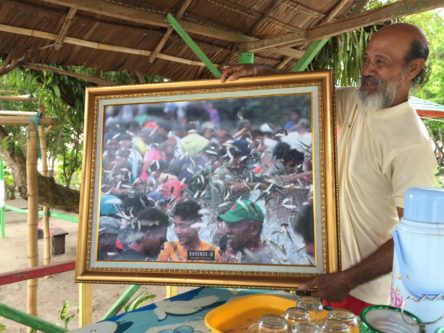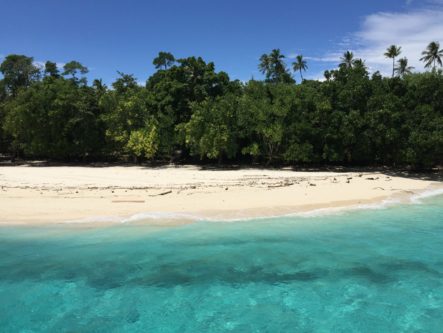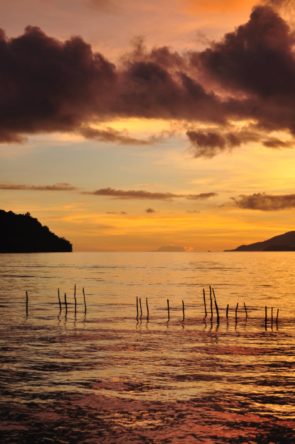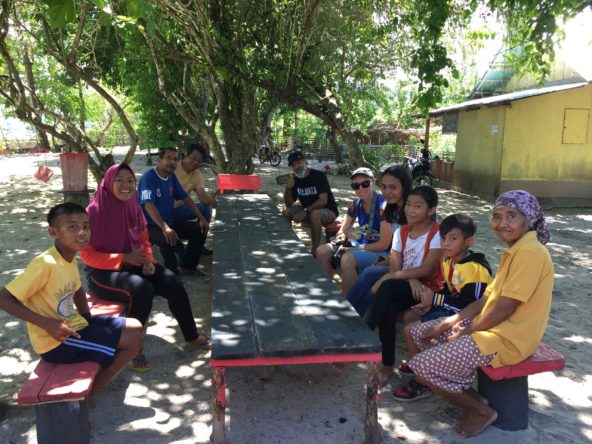This post is the second of a 3-part series on the use of customary law (sasi) by communities from Maluku archipelago in Indonesia and how these practices have helped communities to rebuild their fisheries. Read part 1 here.
Three years ago, I jumped onto a Blue Ventures’ boat and was privileged to support a vibrant network of communities from Southeast, Central and North Sulawesi Provinces managing small-scale octopus fisheries. My work mainly included the provision of technical assistance in fisheries monitoring and management. A year later, we had the opportunity to scale-up our work to more regions where we worked with more local community-based organisations from East and West Nusa Tenggara and Maluku Provinces. I was excited to be back in Maluku again, accompanied by my colleague Maman and with memories from my first visit that had presented an opportunity to support small-scale tuna fisheries on Fisheries Improvement Projects and Fair Trade certification.
Our mission in Maluku was to monitor the progress of community-led conservation and to meet the staff of the community-based organisation, Yayasan Baileo Maluku. We set out for Haruku island – another chance to visit Eliza Kissya ‘Om Eli’ – the head of the Kewang, and his family who had become like family to me, to document how the application of sasi had contributed to the management of community fisheries zones.
the most effective coastal and marine resource conservation happens when local communities own the process… because their livelihoods are highly dependent on these resources” – Jefferson Tasik, Yayasan Baileo Maluku
Sasi and partnership: Yayasan Baileo Maluku
Born out of an activist research project in 1988, Yayasan Baileo Maluku started investigating the use of community customs in conservation (masyarakat adat) that are part of sasi in different islands in Maluku Province. The findings were documented in a book – ‘Potret Orang-orang Kalah’ (the picture of defeated people) that notes the struggles of communities in maintaining their culture in a rapidly modernising world. This research showed that communities relying on culture and customs like sasi, needed to collaborate with others to preserve and strengthen these customs, forming networks to raise awareness to ensure recognition as a powerful part of community-based conservation plans. To maintain sasi, a collaborative network called Baileo meaning ‘a house to gather and discuss’, was formed to ensure that the Indigenous peoples and community traditions are protected. Through this network, Baileo is able to share information, update on issues, and act on challenges through collaboration and coordination. By relying on sasi, Baileo supports the community to preserve their environment and prohibit damaging activities on the island. Some of the work done has focused on the advocacy against the degradation of the mangrove ecosystems in Ambon due to development and mining operations on Haruku island.
Prior to the partnership with Blue Ventures, Yayasan Baileo had a project with Burung Indonesia on community-based conservation on Haruku Island covering the terrestrial and marine areas. This project closely applied sasi in its design and implementation by involving the kewang from Haruku Village through Eliza Kissya. The project aims to use the villages of Haruku and Sameth who have relied on sasi, as models of community-based conservation so that other communities and stakeholders can learn from them. Another goal is to ensure that these community-managed marine conservation areas are legally recognised as marine conservation areas. To improve the efficiency of the application of sasi in community-based conservation approaches, Yayasan Baileo conducts ecological and socio-economic surveys and shares the results with the community. The integration of data with sasi allows the community to monitor their progress and also advocate for the use of other conservation approaches. For example, a past assessment of the community marine areas has led to the setup of zones comprising no-take zones where no extraction is allowed; a sub-zone, a fishing zone, tourism zone and a rehabilitation zone (areas previously affected by bomb fish). Such zones mean that sasi is not only useful for temporary closures but can also contribute to long term conservation through permanent closures as zones of community conservation areas.
What next?
Through the Yayasan Baileo and Blue Ventures partnership, we aim to facilitate the integration of indigenous conservation regulations (sasi) into the region’s legal framework while promoting the use of sasi in conserving natural resources. Another major goal is to get recognition from the government and stakeholders through sharing of best practices. I am pleased to note that the use of sasi has led to the growth of community based conservation. We have also seen the expansion of conservation areas grow from Haruku village to Sameth Village, increasing the area under protection and to a wider range of species. This is evidence that customary laws such as sasi can be the tool we need to prioritise local ownership and increasing community-based conservation efforts.
Look out for part 3 – promoting the use of sasi








